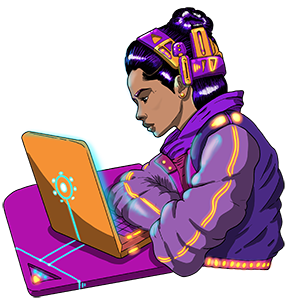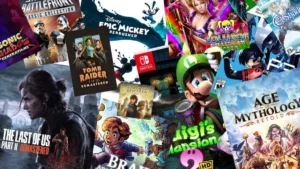Video game localization is always a multi-faceted process, but when a game is created with kids in mind, there are even more variables to juggle. Games can be influential in kids’ formative years by helping them learn and forge lasting memories, so this content needs to be treated with extra special care.
This article covers what you should consider before even translating the first word.
The Growing Influence of Video Games on Childhood
Children learn through play. And although play has always been a central part of childhood, it looks somewhat different for today’s digital native children, who are increasingly engaged in virtual play.

The stats may surprise you. For starters, an eye-popping three-quarters of U.S. households own a gaming console. Meanwhile, the number of children who play video games continues to rise, boosted in large part by kids between the ages of 2 and 5. Believe it or not, over 90% of kids aged 2 and up play video games. And kids between the ages of 8 and 17 spend an average of 1.5 to 2 hours a day playing video games.
If you played video games as a child, you may have noticed that the nature of games for kids has changed dramatically over the last decade. They have become more complex, diverse, realistic and social, all qualities that psychologists have found to have positive effects on young players and contribute to their cognitive, motivational, emotional, and social development.
The Key Role of Language in the Gaming Experience for Kids
Because young players are actively acquiring and experimenting with language, it plays a pivotal role in the overall gaming experience, and the correct linguistic choices can make a game accessible to little ones and help them build their vocabulary and express themselves in new ways.

Analyzing the different variables that guide decision-making in the localization process is at the core of what Verónica, a Linguistic Lead at Terra, does.
“Our mission as localizers is to provide solutions to linguistic problems in all possible scenarios. This involves not only analyzing the existing foundation, but also identifying problems that we foresee could arise and may not even be on developers’ radars when they decide to adapt their game to multiple languages.”
One of these potential problems is fonts. Making sure the font selected for the game supports all the target languages is often the starting point for game localizers. While Chinese, Korean, Japanese, Arabic, and Russian have clearly unique alphabets, languages such as Spanish, French, and Polish have their own set of special characters, and while these deviate only slightly from the basic Latin alphabet, the differences are significant. If these special characters are misused or omitted, the meaning of entire sentences can change.
Another consideration when selecting fonts is the audience’s reading level. Before the age of 8, most children have not mastered cursive, so developers cannot simply use any font. A good localization team will offer advice about the best type of font to use based on the characters that would be easiest for children to recognize, as opposed to more artsy fonts that would only distract or confuse them. They can also indicate when it is appropriate to use uppercase and lowercase letters.

It takes a specially trained person to look out for this type of detail and ensure a seamless experience instead of a bumpy localization ride.
The Takeaway
With so many variables to consider when localizing content for children, bringing a specialized localization team on board in the early stages, instead of leaving localization as an afterthought, can streamline the localization process and give your game the perks it needs to delight kids across the globe.



